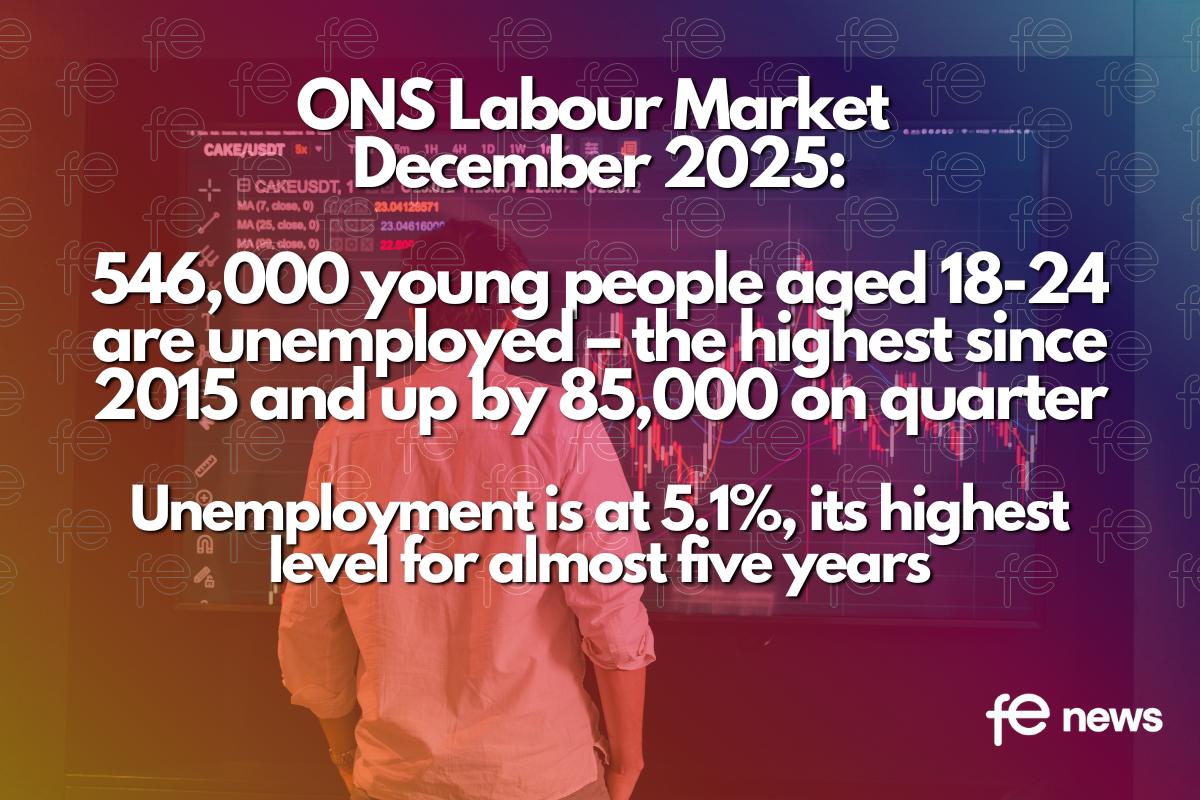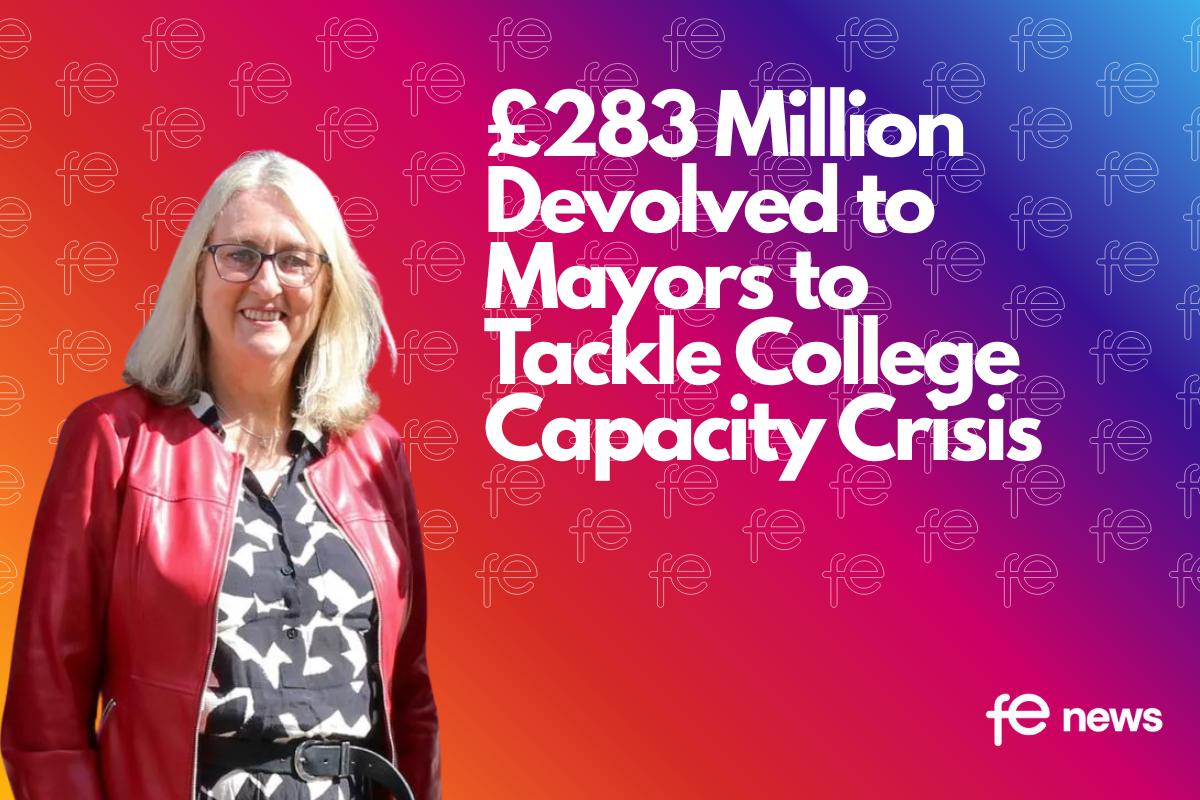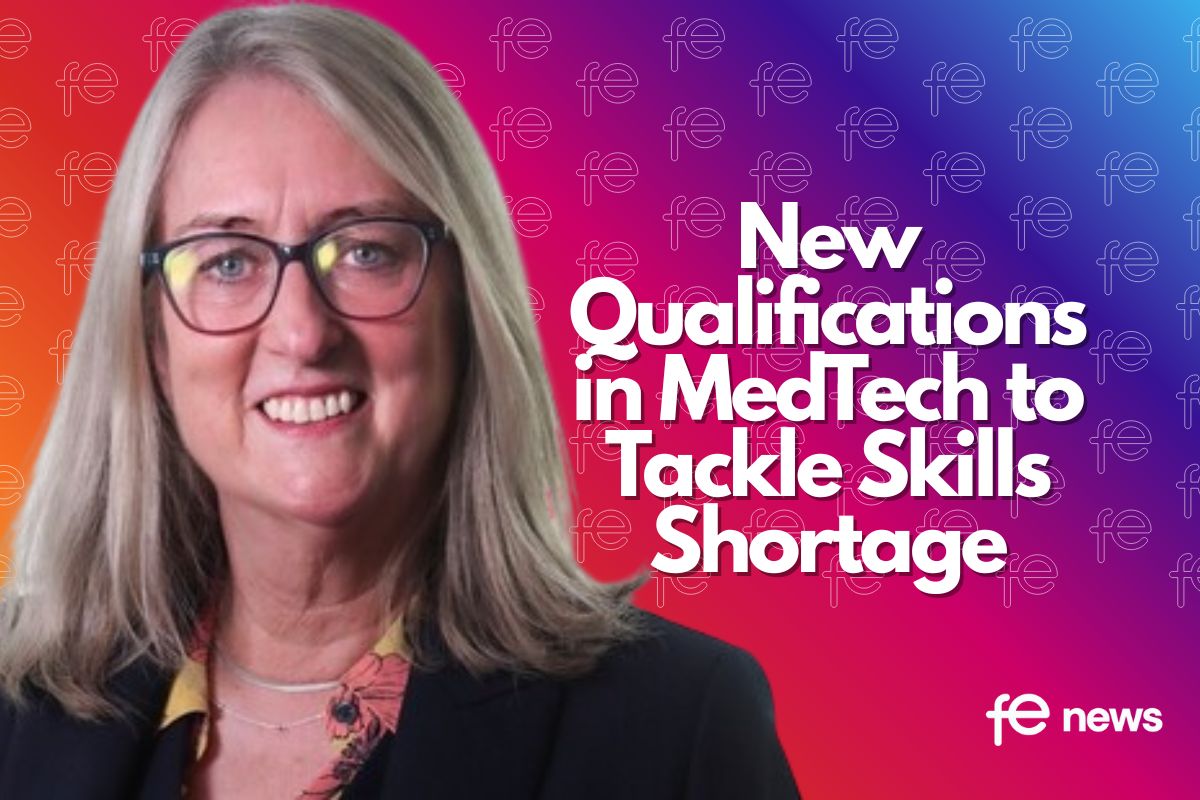Schools and colleges to reopen in full in September

Schools and colleges to deliver their full curriculum, ahead of exams next summer say @EducationGovUK – “Covid-19 secure” measures to remain in place, with children self-isolating at home where needed
Detailed plans have been unveiled for all children and young people to return to full-time education from September.
Current restrictions on group sizes will be lifted to allow schools, colleges and nurseries to fully reopen to all children and young people, as Covid-19 infection rates continue to fall.
Covid-19 secure measures will remain in place to reduce the risk of transmission, with schools being asked to keep children in class or year group sized ‘bubbles’ and encourage older children to keep their distance from each other and staff where possible. This is alongside protective measures such as regular cleaning and handwashing.
Where there is a positive case in a school or college, the Public Health England local health protection team will advise on the appropriate action, which could include small groups of young people and staff being asked to self-isolate for up to 14 days.
Where there are two or more confirmed cases in a two-week period, health protection teams may ask a larger number of other children or young people to self-isolate at home as a precautionary measure.
Where an outbreak in a school is confirmed, for specific detailed investigations a mobile testing unit may be dispatched to test others who may have been in contact with the person who has tested positive. Testing will first focus on the person’s class, followed by their year group, then the whole school if necessary.
All staff, pupils and their families will continue to have access to testing if they develop Covid-19 symptoms and schools will be provided with easy to use home testing kits for children and staff who would otherwise be unable to get a test.
Schools will be expected to have plans in place to offer remote education to pupils who are self-isolating.
 Education Secretary Gavin Williamson said:
Education Secretary Gavin Williamson said:
“I know these past three months have been some of the most challenging that schools have faced. What they have achieved to make sure that young people are kept safe and can continue to learn during this period is remarkable, and I am incredibly grateful for that.
“Nothing can replace being in the classroom, so ever since schools, colleges and nurseries closed to most children, we have been working hard to ensure they can reopen as soon as possible. We have already seen more than 1.5 million children and young people return, but we must make sure all pupils can go back to school in September, giving them the opportunity to thrive and fulfill their potential.
“I want to reassure parents and families that we are doing everything we can to make sure schools, nurseries, colleges and other providers are as safe as possible for children and staff, and will continue to work closely with the country’s best scientific and medical experts to ensure that is the case.”
The guidance published today (2 July) provides schools, colleges and nurseries with the details needed to plan for a full return, as well as reassuring parents about what to expect for their children. The guidance has been developed in close consultation with the sector and medical experts from Public Health England.
Deputy Chief Medical Officer, Dr. Jenny Harries, said:
“Thanks to the hard work of everyone, including our teachers and all school staff, there has been a decline in the rate of COVID-19 transmission in our communities.
“A child’s education is essential to their healthy development – we know that missing too much school can have a negative impact on children’s mental and physical wellbeing.
“Everybody wants children to be safe and thankfully as we have learned more about COVID-19, the evidence has shown that the risk of severe disease in children is low. However, although the number of COVID-19 cases has declined, it is still in general circulation – so it important we ensure schools implement sensible precaution to reduce potential transmission of COVID-19 and minimise any risk to teachers and their pupils.”
 Chief Executive of the Association of Colleges, David Hughes said:
Chief Executive of the Association of Colleges, David Hughes said:
“Since the outbreak of COVID19, colleges have been pragmatic and acted swiftly to protect student safety, whilst also protecting their continued access to learning and training. Students should be confident that they will continue to receive a high quality education with great pastoral support as colleges continue to increase the numbers of students able to return to their sites.
“This guidance offers some clarity to college leaders and staff planning for the safe reopening of their building and campuses in September, but they should continue to make their decisions based on health and safety advice and their local context.
“There is no doubt that much of the teaching in colleges will need to be a blend of online and on-campus delivery, and colleges have learned a lot about how that mix can work best for different groups of students. Colleges will all be facing different challenges in September and will know what works best for them in regards to the amount of teaching and learning to keep online and the students or provision that have an urgent need for face-to-face delivery.
“It is right that the government has focused on getting young people back into education and training as quickly as possible, but there remains a gap that needs to be plugged. Students leaving school face an uphill challenge to get back on track with their learning, colleges are preparing to help them as much as they can but they need the same catch up support that have been given to their peers in schools. Anything less is indefensible.
“Government must also look urgently into how they safely bring adults back into education and training. It cannot be right that an adult can now go to the pub with their mates, but they cannot undertake an assessment to complete their construction course, even when things have been put in place to make it safe to do so.
“Colleges are working extremely hard to ensure they are ready to offer the best experience to their new and returning students. There are still questions that will need clarification ahead of September, including around transport, minimising contact and mixing and for students with a work experience or placement element to their studies. They also need to clarify funding rules that will allow colleges to deliver all that is being asked.
“AoC will continue to work with officials to ensure students and staff can transition back into colleges safely when the new term arrives.”
 Responding to the new guidance, David Laws, Executive Chairman of the Education Policy Institute said:
Responding to the new guidance, David Laws, Executive Chairman of the Education Policy Institute said:
“Schools will welcome the fact that they now have the guidance they urgently need to prepare for the Autumn term. The government is, of course, right to seek to bring all children back into education from September, provided the health advice supports this decision. Learning loss since March is likely to have been significant, and will undoubtedly have increased the already unacceptable attainment gap between disadvantaged pupils and other students.
“It’s clear that in order to get all pupils back to school, the government is having to be far more pragmatic about social distancing. Even “year group bubbles” will be difficult to control effectively, when around 1 in 3 secondary pupils travels to school on a school bus or public transport.
“Although children seem to face significantly lower health risks from the virus, their role in transmission of the virus is still unclear. The government should publish the detailed health guidance on which these plans are based, and it must have in place a robust testing and tracking system to allow a swift response if the return to school significantly boosts transmission.
“If the virus remains in circulation in the Autumn, then other parts of society may need to continue social distancing to allow the safe return of schools. That could mean continued working from home, wearing of masks, and caution over other key re-opening decisions.
“Finally, given the very serious risks of a second pandemic wave, with local and national lockdowns, the government must have a robust “Plan B” that will allow all pupils to work effectively at home in the Autumn and Winter. All children – not just the current “priority groups” should be given home access to IT, such as laptops, and additional provision for online tutoring is needed. This will be expensive – but it would be even more costly to allow many children to lose up to a year of learning.”
 Kevin Courtney, Joint General Secretary of the National Education Union, said:
Kevin Courtney, Joint General Secretary of the National Education Union, said:
“We all want to see a full return for all pupils from September, but this must be safe, well-planned and in pupils’ short-term and long-term interests. The litmus test for school leaders, teachers, support staff and parents alike will be a thought-through strategy that puts to bed any concerns over safety. The Government guidance today is unlikely to address these concerns.
“The Health Secretary, Matt Hancock, speaking about the Leicester outbreak this week said that children can transmit the disease, a number of children have tested positive for the virus and where outbreaks occur schools will have to close.
“The Government has to be able to convince school staff that sufficient measures are in place to make it ‘Covid secure’ for them to work in a class of 30 or more children – with neither social distancing nor PPE, and often with poor ventilation. In secondary schools the difficulties multiply, because the Government guidelines suggest that a whole year group should be treated as ‘a bubble’, and that these year-group bubbles should be kept apart by staggering arrival times, breaks and lunch times. The practical difficulties involved in arranging this separation of year group bubbles are immense and will not be possible in many schools.
“The Government must, as a minimum, be able to show that Public Health England and SAGE are in complete agreement with them that when the guidelines are implemented in September, transmission networks can be managed and vulnerable staff kept safe. This will certainly depend on the case count being lower in September than it is now.
“The guidelines put an emphasis on test and trace, but parents, school leaders and teachers will be wondering ‘where is it?’ The NEU has been calling for track and trace since March. Boris Johnson promised a ‘world beating’ system by 1 June but has still not delivered anything like an adequate programme – the Government needs to be able to inspire confidence that track, trace and isolate will be capable of taking the load by September or we will see patterns of school closures like the one just announced in Leicester.
“We are concerned that the Government does not have a plan B if these guidelines do not work or if cases are higher by the time we get to September. That is why we have been arguing, via our 10-point Education Recovery Plan, for the Government to find extra classroom space, mobilise supply teachers, beginner teachers finishing college, and those colleagues who have left the profession. If the Government could build and staff the Nightingale hospitals then it should be able to build and staff Nightingale classrooms to ensure our children can get back to school.
“School leaders need clear guidance based on scientific evidence, but instead they are confronted by a Government which is rushing through ideas that seem more based on hope than on science. A poor plan, such as this one, risks failing children, parents and staff alike. We need much clearer science as well as guidance that is grounded in reality, for the full return of all pupils to work. As ever, the National Education Union is ready to talk with Government to find a way forward.”
Anne Longfield, Children’s Commissioner for England, responding to the Government’s plan to reopen schools to all children in September, said:
“I have been calling for some time on the Government to set out how to get all children back into school after the summer holidays, so I am pleased there is now a comprehensive plan. The damage being done to the wellbeing, education and life chances of many children is growing by the week, and it would be a national disaster if schools are not open to all by September.
“The Government and schools must now work together to make this plan happen, putting in place a rapid test and trace system to reassure teachers and parents. It must also run a communications campaign for parents so that they feel confident about sending their children back to school. But above all, there needs to be a ‘whatever it takes’ attitude to ensure that the will and resources are there to make this work.
“The sacrifices made by children during the lockdown have been enormous. We must repay that by making sure that every child returning to school after six months away gets the help they need to get back on track. I am concerned that some children will really struggle to adjust, and schools must work to prevent a spike in exclusions or off-rolling. The Government should also recognise the impact of this crisis on many children’s mental health and commit to an NHS-funded counsellor in every school.”
NASUWT General Secretary Dr Patrick Roach, said:
“We want to see all children back in schools as soon as it is safe to do so.
“Whilst the Government has published this latest guidance, it remains unfortunate that it has still not come forward with a plan to secure public confidence and ensure the safe return of all children to schools in September.
“Without a clear plan from the Government, there is still a risk of further confusion and uncertainty.
“The Government’s guidance for the full reopening of schools is predicated on the assumption that virus transmission rates will continue to fall.
“However, there will be many questions for parents and for teachers and other staff working in schools about safe reopening, which is what we all want to see.
“The Government will need to provide clarity in response to the latest evidence of virus transmission amongst under 18 year olds which has contributed to the local lockdown in the city of Leicester.
“The scientific basis underpinning the Government’s decision to relax protective measures in schools also needs to be explained, including the decision to expand pupil bubbles to include entire year group cohorts.
“It remains essential that teachers with underlying health conditions, including clinically vulnerable and clinically extremely vulnerable staff, are not put at risk as a result of the decisions taken by schools on full reopening.
“Employers must also ensure they act responsibly in ensuring that their decisions on full reopening do not further widen racial disparities in Covid-19 transmission and deaths.
“Ensuring that schools are kept clean as all pupils return is essential to preventing the spread of the Coronavirus, and we will be looking to the Government to provide the additional resources needed to enable all schools to do that.
“In every other workplace it is accepted that hand washing, social distancing and PPE are critical elements of covid-safe working practices. It is essential that the same health and safety expectations are applied in schools as they are in other workplaces.
“We welcome that the Government’s guidance for the first time reminds schools of their statutory duties for health and safety. However, the Government also needs to have in place a clear health and safety inspection and enforcement regime to give parents and teachers the reassurance they will need.”
Cllr Teresa Heritage, Vice Chairman of the Local Government Association’s Children and Young People Board, said:
“The Government’s guidance provides schools and councils with a framework to reopen schools safely from September, but they will now need the space and time to work locally to draw up detailed plans.
“Councils want all children to return to school to continue with their education and we also want to work with the Government, education leaders and schools to make sure the national effort is a success.
“It is therefore vitally important that the Department for Education provides the reassurance that parents need to send children back to school, and remains in dialogue with school leaders to tackle outstanding issues, such as the provision of home-to-school transport and sanctions for non-attendance, and work with schools and parents to secure full attendance in September.
“Throughout the coronavirus pandemic, we have shown that by working together we can achieve the best outcomes for our communities. As we look to return to normal, councils want to continue working closely with the Government and local partners to address practical issues and to provide any necessary resources.
“Councils can play a key role in the Government’s Test and Trace programme and it is therefore important to give councils the powers to manage outbreaks in schools if new COVID-19 clusters emerge.”
UNISON head of education Jon Richards said:
“Everyone wants all children to return to the classroom as soon as possible. There are still issues, though, around staffing and safety.
“Test and trace must get a whole lot better for social distancing to be reduced and large pupil ‘bubbles’ to become the norm. Otherwise whole year groups would have to isolate when a child gets ill.
“There also must be guarantees teaching assistants don’t become permanent substitute teachers.
“Some have been filling in gaps left by staff going sick with Covid-19 or shielding. But this can’t be the case long term – teaching assistants aren’t trained as teachers, nor paid to do their jobs.
“Vulnerable pupils and those with special educational needs should be a priority. Staff want to get back working with these children, but social distancing is a challenge.
“Risk assessments are vital to ensure staff are protected from infection. Yet the government has largely ruled out using personal protective equipment.
“Telling schools just to get on with it isn’t the way forward. Instead, ministers must work with school staff and unions to agree safe ways of getting pupils back to the classroom.”
Martin McKay, CEO Elect of Texthelp, a market-leader in global education technology, says:
“From September, schools will have finalised their contingency plans for switching to remote learning in the case of localised closures. After three months of experimentation with different educational technology tools, boards will decide what approach they deem best for their students, and how they will structure remote learning for all age groups.
“Students have missed out on a full term of instruction and there will be a real learning loss this summer. Teachers will need to assess their students’ core reading and writing abilities at the start of the new term to determine if literacy interventions are needed.
“At Texthelp, we have been at the forefront of learning analytics for both reading and writing for a few years, and we have products that are designed to assess reading and writing. We can help compare the results to national averages. We also have tools to help students practice reading and writing with motivation and feedback to help them get back on track.
“Remote learning technology has been pushed into the mainstream more quickly than expected. With meaningful collaboration between school leaders and providers, technology will become the vehicle for students to continue to learn and develop despite the huge disruption caused by the pandemic.”
 Liberal Democrats Education Spokesperson Layla Moran said:
Liberal Democrats Education Spokesperson Layla Moran said:
“A raft of guidance is again released, but it is meaningless unless it is accompanied by robust scientific evidence to reassure the public that these plans won’t result in an increased risk of Covid-19 spreading.
“The practicality of the plans also raise concerns. Dropping entire subjects and a continuation of remote learning without much needed equipment is far from an indication that this Government is giving pupils the best start in life.
“With the start and end of a school day moving to avoid rush hour, the Government will need to explain what working parents can do to get their children safely to school.
“Ministers must ensure every aspect of their thinking is fully transparent and open to scrutiny. They must also now engage with the profession and the public to answer these questions and more, before their plans fall apart at the seams.”
Schools will need to work with families to secure full attendance from the start of the new academic year, with the reintroduction of mandatory attendance.
If a child or young person is unable to attend school or college on medical advice or they are living in a household with someone who is extremely clinically vulnerable, families should discuss this with providers and will not be penalised for non-attendance.
A DfE spokesperson said:
“We’ve said we want to see all children back at school in September – returning to full primary and secondary class sizes in a safe way.
“The amount payable under a penalty notice is £60 if paid within 21 days of receipt rising to £120 if paid after 21 days but within 28 days. Fines are also a last resort.”
To ensure pupils can catch up on lost learning, schools will be required to resume teaching a broad and balanced curriculum in all subjects, making use of existing flexibilities to create time to address gaps in knowledge. Schools should consider how all subjects can contribute to filling gaps in core knowledge.
This will help pupils catch up and will work alongside the financial support provided to primary and secondary schools through the Government’s £1 billion Covid catch-up package. This is on top of the £14 billion that we are investing in schools over the next three years.
Exams will take place in 2021 and Ofqual is consulting on arrangements for those exams, including measures to mitigate any impact on pupils from time out of school.
Alongside this, Ofsted will carry out visits to schools in the autumn term to discuss how they are supporting the return to education for their pupils, with routine inspections planned to restart in January 2021.
The schools guidance sets out a range of measures to protect children and staff. This guidance applies to all mainstream schools, alternative provision, independent schools and boarding schools and sets out advice on how they can minimise contact and mixing. Separate guidance has also been published for special schools.
Schools should implement class or year sized bubbles, as well as encouraging staff and pupils, where they are able, to keep their distance from each other and avoiding touching. All schools should work to implement other policies in line with their own risk assessment and in a way that ensures pupils can be taught a broad and balanced curriculum.
Schools, nurseries and colleges will need to put plans in place in line with their own risk assessments, however they will not need to expand their facilities to create extra space.
Children and staff will not be required to wear face coverings in schools but children over the age of 11 travelling on public transport will need to wear a face covering and observe social distancing. For those pupils travelling on home to school transport, pupils should sit with others from their group and remain in their class or year group “bubble” wherever possible.
Richard Woods, COO of school transport specialist Kura said:
“Walking or cycling to school is simply not viable for the millions of children who have miles to travel each day. Before lockdown, 61% of pupils required transportation to school, which rose to 71% of those living in smaller towns and villages, meaning that taking away the option of public transport will leave the majority of children and parents no choice but to travel to school by car.
“Pre COVID-19, the daily school run was responsible for one in four cars on the road during rush hour. The widespread return to schools in September is likely to worsen this issue, potentially adding millions of cars to the roads over the coming months. This would rapidly undo the clean air benefits we have enjoyed throughout lockdown, creating toxic air pollution both on the roads and around the school gates – a major concern for 48% of parents.
“We would urge the Government to consider the longer-term harm this move could have on our schoolchildren, and work closely with schools and the education sector to create safe shared transport solutions that meet the needs of all.
“The solutions are readily-available – for example, we are working with schools and businesses to create safe, socially-distanced transport, with passengers in trackable bubbles, in case of the need to alert them about potential infection – and now is the time to make use of them.”
Nurseries and other early years providers, including childminders, have already been welcoming back children of all ages since 1 June, with a range of protective measures in place. From 20 July, restrictions on group sizes for nurseries, childminders and other early years providers will be lifted, increasing capacity for more children to return, increasing capacity from the start of the summer holiday.
Attendance in early years settings remains optional, but we strongly encourage families to take up their places. Families can check if their child has become eligible for any of the free childcare entitlements, worth on average £2,500 a year to parents of 2 year olds, and up to £5,000 a year to parents of 3 and 4 year olds.
Other measures set out in the guidance include:
- teachers to distance from each other and older students where possible
- increasing the frequency of cleaning
- reducing the use of frequently shared items
- minimising contact in corridors











Responses